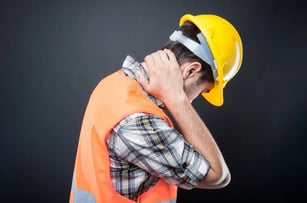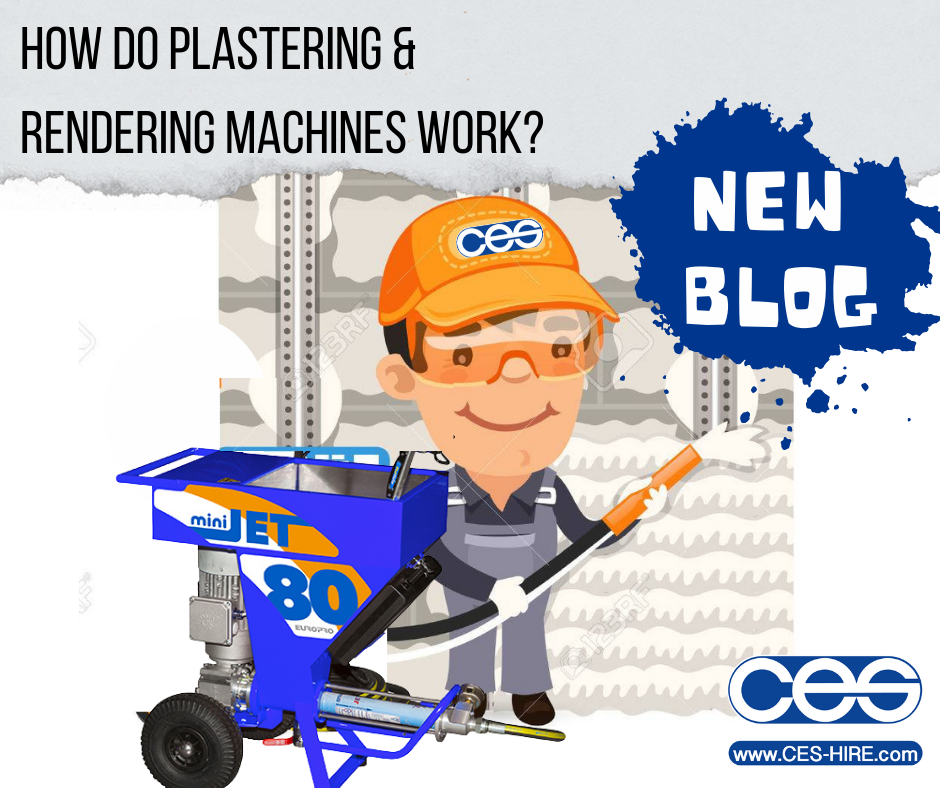The Pros Of A Plastering Machine

Is this you? Aching back, neck, shoulders? (Take your pick, you feel like you’re falling apart!) Knackered when you get home? Thinking you may not have many years left in this game? Plastering puts your body under a lot of physical stress. It is hard manual labour and may not be a job you’ll be doing until you’re 60. However, there is a solution. Plastering machines.
Spray machines for plastering have been popular in Europe for some time and are becoming increasingly common in the UK. There are a number of benefits including reduced manual labour, increasing the speed of plastering, improved consistency of plaster, greater uniformity across large scale projects and less room for human error. Sounds magic doesn’t it?
VIP (Very Important Plasterer)
Picture this; sofa, cuppa, Netflix binge, sat in your lounge that took at least 20 paint samples to pick the ‘right’ grey. How much do we think about the plaster under that ‘muted pewter’ paint? Smooth walls ready for paint need a skilled plasterer to work their magic first. An incredible 3.1 million people (9% of the workforce) in the UK work in the construction sector which includes our beloved plasterers. The growth of our country is dependent on construction and that includes the VIPs (Very Important Plasterers). Plastering is essential for strengthening the walls in all types of building and preparing it for ornamentation. So, it seems we need to protect the species that is the plasterer, keeping them free from bad backs and short-lived careers through injury. This is where the plastering machine steps in.
How does a plastering machine work?
Let’s get into how a spray plaster machine really works. Construction generally is considered to have a long turnaround time. In order to reduce this, we need to perform the highest output with minimum cost. This means accuracy, precision, quality and cycle time must be optimised and the way to do this is through automating our systems. In other words, increase your output and quality through a wall plastering machine. Traditionally a plasterer would mix his plaster and apply to walls with a hawk and trowel, then finish by ruling and smoothing. Back breaking and time-consuming work, right?
.png?width=284&name=Untitled%20design%20(24).png)
A machine will mix and pump ready mix dry bagged material into wet plaster which can then be sprayed. A simple drop of the bag over the grate, set your water consistency and you’re off. No manual mixing and carrying wet plaster to the working area. The machine will also steadily create a consistent mixture with a fixed ratio of material to water. This means an even mixture across a whole house or even multiple houses as the machine regulates the mix. A spray plaster machine uses rotor and stator pump technology to ensure a continuous flow of material. A hose carries the material to the wall to be sprayed. Finally, material is sprayed onto the wall using air projection in the spray gun.
Types of Plastering Machine
There are two types of plastering machine, a mixing pump and a conveying pump. A mixing pump will mix the dry bags to allow continuous pumping of the wet mix. Since the material is automatically mixed and pumped, it allows the plasterer to spray the material at the same time. A conveying pump relies on the product to be pre-mixed and poured into the hopper on the machine. Essentially with a machine you could plaster completely on your own. However, it can be useful to have a two-man team; perhaps a labourer to fill the machine and a plasterer to spray and finish the wall. Don’t forget, whilst a plaster laying machine cuts out a great deal of manual labour, you still require the skill of a plasterer for ruling the wet gear and finishing off.
Find out more
CES has a range of plastering machines available. Why not hire one and see for yourself the time and labour these machines can save. We have small, incredibly portable machines like the Euromair Minijet 80 Airless Plastering Machine. Mid-range options such as the MixPro 28. As well as much larger diesel machines like the Euromair Compact Pro 80. Browse our website or take a look at our YouTube page to see these machines in action.



